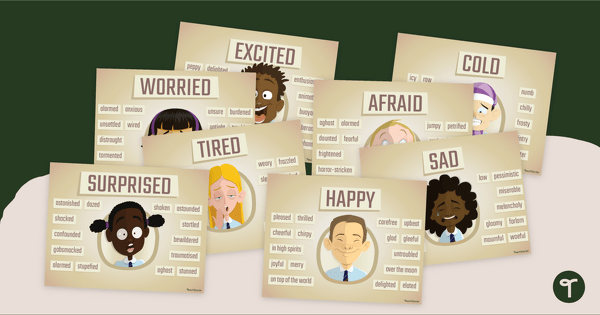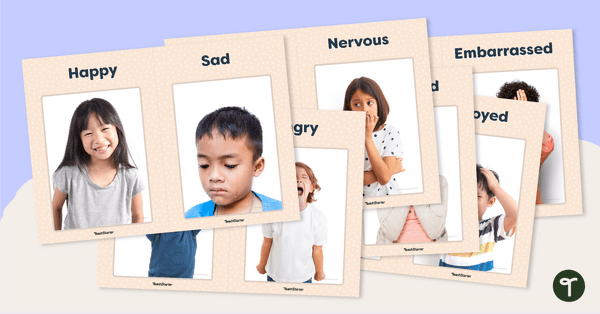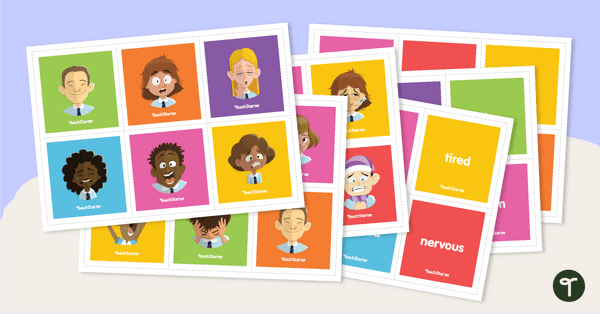Australian Curriculum V8
ACELA1787
Explore different ways of expressing emotions, including verbal, visual, body language and facial expressions
Elaborations
- extending students' vocabularies for the expression of feelings and emotions (Skills: Literacy, Critical and Creative Thinking, Personal and Social Capability)
- considering how others might respond before students express their views and how students might respond to others' views in civil and constructive ways (Skills: Literacy, Critical and Creative Thinking, Personal and Social Capability, Ethical Understanding)
Show more
4
teaching resources for those 'aha' moments
- Plus Plan

Synonym Poster Pack - Emotions Chart Display
Blend social-emotional learning and vocabulary building activities with a set of 15 emotional synonyms anchor charts.
- Plus Plan

How Are You Feeling Today? Poster
Help students to recognise and identify their feelings and emotions with this colourful classroom display poster.
- Free Plan

Recognising Feelings Flashcards
Improve your students' emotional literacy with this set of feelings flashcards.
- Free Plan

Feelings and Emotions Match-Up Activity
Help students to recognise and identify their feelings and emotions with this interactive match-up activity.